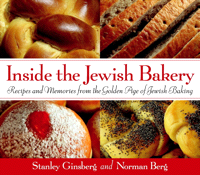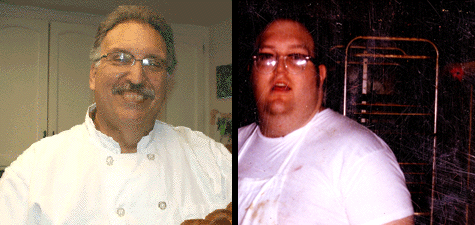Summer is a great time to make bread. Bread making is a wonderful great family activity with kids home and bored and hungry. But don’t just make white bread – make bread with history. Stanley Ginsberg and Norman Berg‘s Inside the Jewish Bakery: Recipes and Memories from the Golden Age of Jewish Baking (Camino 2012) is full of the history of Jews in the Pale and their eventual arrival in the US. The very bread they ate and the recipes that they brought with them are emblematic of their economic and cultural history. Use bread making to teach European history on the sly this summer.
 The first chapter, Vanished Worlds, covers Jewish life in Central and Eastern Europe and how it changed as they moved to the New World. There are photographs of bakers and even a baker’s notebook with notations of his formula for making bread. The rest of the book is full of recipes and stories about bread. There is an instructive table comparing the protein content of various kinds of flour used in bakeries, from Cake Flour with 7-8.5% to Whole Wheat Flour with 11.4-14.0%, as well as similar descriptions for rye flours.
The first chapter, Vanished Worlds, covers Jewish life in Central and Eastern Europe and how it changed as they moved to the New World. There are photographs of bakers and even a baker’s notebook with notations of his formula for making bread. The rest of the book is full of recipes and stories about bread. There is an instructive table comparing the protein content of various kinds of flour used in bakeries, from Cake Flour with 7-8.5% to Whole Wheat Flour with 11.4-14.0%, as well as similar descriptions for rye flours.
The first bread to tackle is Challah
No matter whether it was sweet and rich with egg and oil, as in Russia and Poland, or lean and tasting of sourdough, sprinkled with poppy or chermushka seeds (Nigella sativa) as a reminder of God’s gift of manna when the Children of Israel wandered in the desert, or embellished with raisins and saffron for the Festivals, challah was so central to observance that it was unthinkable for even the poorest of homes to go without Shabbes bread at the Friday night meal. (p. 23)
There are five different recipes for challah from Bakery Challah (pp. 16-17) to Sweet and Rich Challah (pp. 33-34). Then there are step-by-step pictures on how to make various braided challah from rolls to six-stranded bread.
Bread making gets even more interesting for rye bread. They included a recipe for rye bread from prewar Lithuania and comments on how marble rye developed. If you are looking for bagel recipes – there’s the classic New York Water Bagel (pp. 98-100) but also Montreal Bagels (pp. 100-102) and New York Egg Bagels (p. 103-104). Luckily, the book also includes a whole section on Bialystoker Kuchen (Bialys) – the wonderful oniony rolls that were almost lost when the Jews of Bialystok were murdered. The book also contains recipes for pastries, coffee cakes and cookies found in Jewish Bakeries.
The black and white photos of bakers, bakers’ wives, and bakeries, bring the Jewish bakery to life – even to the corners of America where the only bagels are the doughy supermarket kind. Don’t gripe about the insipid, sweetened bread found in most corners of the country – bake your own.

